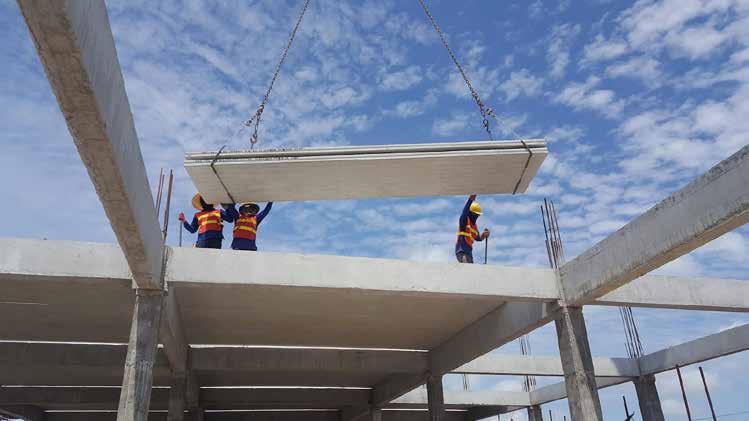
1 minute read
Pre-stressed hollow core slabs
Using3D steel moulds for production at the factory may be applicable to premanufacturing of bathroom and elevator shaft modules. However, it is important to keep in mind that there is a balance of just how heavy and complex precast concrete products are feasible to pre-manufacture.
Architectural freedom may get very limited if buildings are completely built using 3D moulds. Modern precast offers practicality and saves costs Modern, design-focused precast concrete is suitable for all types of buildings, in seismic areas and also in areas prone to tornadoes.
Advertisement
Precast concrete
Precast concrete can be used as the main building material or only partly as a structural component. When high-quality, energyefficient buildings have been the target, the modern, design-focused precast concrete has repeatedly been selected as the construction method.
Precast concrete is a proven, industrialised building method. Even if installation still takes place at the construction site, the main part of the work is transferred from the chaos of a building site to controlled, organised factory conditions. In addition, housing units are still completed within a reasonable time, costefficiently and in a safe manner. The use of precast concrete brings quite a lot of savings compared to alternative solutions. The savings come from a number of sources.
As an example, in residential buildings, the span of pre-stressed precast hollow core slabs can be from 8 meters to 12 meters. The external insulated precast concrete wall panels can work as the only load-bearing walls.
Furthermore, pre-stressed hollow-core slabs save up to 45 percent in concrete compared to reinforced concrete floor casted in a 3D mould, or a plain cast-in-situ reinforced slab. Prestressing steel can also be cut by 30 percent because of the lower self-weight of hollow core slabs. In an average apartment this means savings of about 14 tons of concrete and more than 250 kg of steel.
Moreover, pre-stressed hollow core slabs can be partly recessed which makes it easier to prepare bathroom plumbing. Optimised production process Modern automated precast concrete production plants optimise entire precast production process, from 3D building design, to the construction site.
The production lines feature advanced software, modern table circulation and state-of the art production machinery. Automated functions cover planning, monitoring and controlling the process of producing building blocks for acceptable buildings.
An acceptable building for a home should, first of all, be affordable and of a decent quality, with sufficient living space, good structural stability and located in a sustainable neighbourhood.
The acceptable home needs to match expectations of future home owners and tenants. “To sum up, good quality and low life-cycle costs of precast concrete buildings make them an attractive choice for home owners.
Add to that short construction time and cost efficiency of the construction process and you get an optimal choice for large housing projects.










